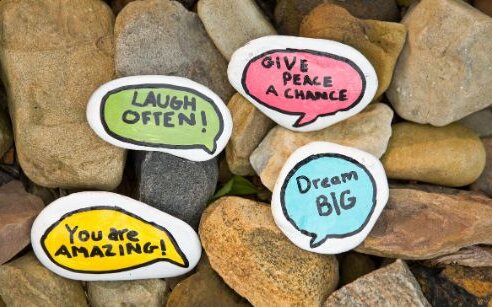When we think about the senses, most of us picture the “big five”: sight, hearing, taste, smell, and touch. But did you know that we actually have eight senses? In addition to the traditional five, there are three more that play a huge role in learning and daily life:
- Vestibular: our sense of balance and movement.
- Proprioception: our awareness of body position and pressure.
- Interoception: our internal sense of what’s happening in our bodies (like hunger, thirst, or heart rate).
Everyone Has a Unique Sensory Profile
Just like fingerprints, each of us has a unique sensory profile. This means we might experience the same sensory input very differently. For example, some people may crave loud music or bright lights, while others find the same input overwhelming.
A helpful way to think about this is through the cup analogy:
- Imagine that for each sense, you have a cup.
- Some people have big cups that take a lot of input to “fill up” (they may seek out strong sensations to feel satisfied).
- Others have tiny cups that overflow quickly (they may be very sensitive to or avoidant of certain sensations and need less stimulation).
- Another possibility is having medium cups that take a moderate amount of input (they may not require adjustments to feel comfortable in most environments)
- A person’s cup sizes can vary from one sense to the next, and it is common for neurodivergent people to have a range of cup sizes making up their sensory profile
- Regulation strategies and sensory tools are the taps that help control how much input goes into a cup
- Some people may be more active in controlling the taps, while others may not use them as much or need another person’s help.
- A person might have different cups for different environments, such as home, school, and the outdoors.
Understanding your own or your children’s sensory cups can be powerful for learning, regulation, and daily life.
Free Sensory Processing Handout
New Sensory Toolkits at LDS
Our team is committed to creating inclusive, supportive learning environments. That’s why we’ve expanded our resources with diverse sensory toolkits in our Learning Centres and a more robust range of sensory supplies. These include tools to help learners regulate their energy, focus their attention, and feel more comfortable and confident during their sessions.
Whether it’s a weighted lap pad for proprioceptive input, noise-cancelling headphones for auditory sensitivity, or fidgets to support focus, these resources are now readily available for learners of all ages to explore what works best for them.
Why It Matters
1 in 6 people experience sensory processing in a way that disrupts their everyday life.
(Pediatric Rehabilitation Services, Alberta Health Services, 2025)
Recognizing and supporting all eight senses and the unique sensory cups we carry can give learners more ways to engage, self-regulate, and thrive. Our new sensory toolkits are one more step in creating a space where every learner’s needs are understood and met.
Meet with our Occupational Therapist and get a detailed sensory profile for your child aged 2-19 to help you understand preferences, aversions, and self-regulation needs.
December 2025 update: Sensory Friendly Activities in Metro Vancouver area
– Marlo Humiski, Senior Manager, Early Years Programs and Katherine Mills, Social Programs Manager & Lead Instructor
LDS is a community of dedicated professionals who write collaboratively. We recognize the contribution of unnamed team members for their wisdom and input.



